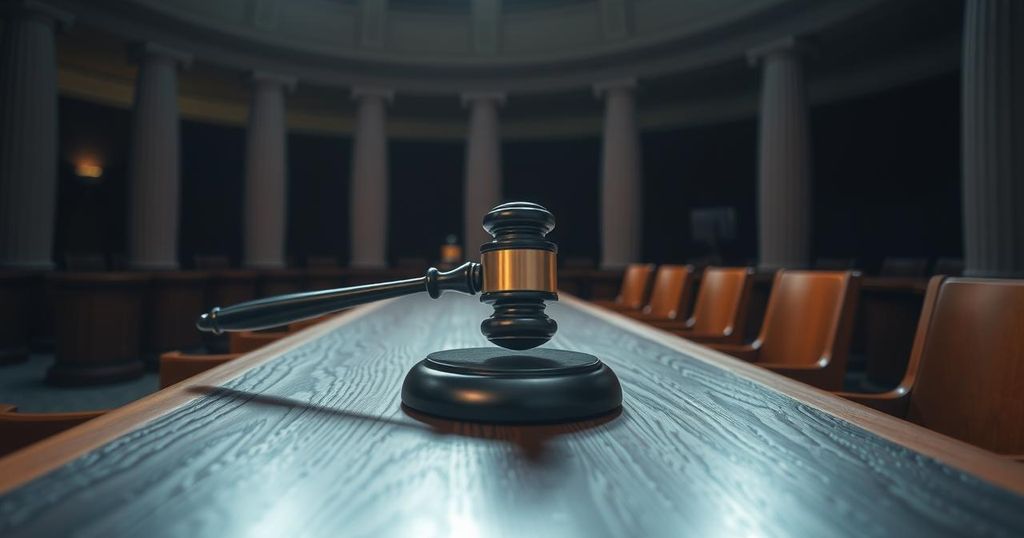World news
2024 PRESIDENTIAL ELECTION, AFRICA, AMERICA, BADGER STATE, BARRY BURDEN, BRAD SCHIMEL, BUILDING AMERICA ’ S FUTURE, DEMOCRATIC RED, DIANE HENDRICKS, DONALD TRUMP, EL, ELECTION, ELON MUSK, ERIC HOLDER, GEORGE SOROS, GHANA, JUDICIARY, PRESIDENTIAL ELECTION 2024, SCHIMEL, SUSAN CRAWFORD, TRUMP, UNIVERSITY OF WISCONSIN - MADISON, US ELECTIONS, WA, WISCONSIN, WISCONSIN DEMOCRACY CAMPAIGN
Marisol Gonzalez
0 Comments
Controversial Wisconsin Supreme Court Election of 2025: A Critical Political Battlefield
The Wisconsin Supreme Court election in 2025 will determine control over the court and address critical issues like abortion rights. The race, featuring Susan Crawford and Brad Schimel, is forecasted to be the costliest in the state’s history. National figures and significant funding from wealthy donors are heavily influencing the campaigns, indicating the election’s importance in state and national politics.
The upcoming election for a Wisconsin Supreme Court seat has emerged as a significant political conflict in 2025. Although it involves only one seat, the election is poised to be one of the most expensive and fiercely contested battles, with the control of the seven-member court and the future of a 19th-century abortion ban at stake. This contest features liberal Susan Crawford against conservative Brad Schimel, and their campaigns reveal critical insights into voter attitudes toward Republican and Democratic strategies as Donald Trump’s presidency unfolds.
Projecting to exceed the previous Supreme Court race’s record spending of $51 million in Wisconsin, the upcoming election is especially consequential. Despite being officially nonpartisan, both parties are mobilizing substantial resources, with wealthy individuals from opposing sides contributing notably to campaign funds. Among these contributors are billionaire liberal George Soros and conservative benefactor Diane Hendricks, highlighting the financial ramifications of this politically charged contest.
Involving significant political figures, including a new ad campaign funded by Elon Musk’s Building America’s Future at $1.6 million, the election underscores the intensity of the political landscape. Barry Burden, a political scientist, asserted the race’s importance by stating, “It’s going to be a blockbuster… It’s become a place where a lot of hot-button issues people care about get decided.”
Former Attorney General Eric Holder is actively supporting Crawford, emphasizing the Democratic Party’s strategy to counter Republican dominance. Meanwhile, the Democratic National Committee is positioning to galvanize support, as highlighted in communication calling on supporters to counterbalance the financial backing that Republicans receive. The nature of candidate support and strategic campaigning clearly indicates the high stakes involved.
Both campaigns reflect the ongoing polarization in Wisconsin politics, particularly regarding issues such as abortion rights and collective bargaining. The Supreme Court race will methodically reveal whether voters support a shift towards liberal judicial interpretations or maintain conservative principles in state governance. With liberal candidates historically gaining an edge, the outcome of this contest will be closely monitored.
The significance of the Wisconsin Supreme Court race extends beyond state lines, projecting potential implications for broader national trends in elections and judicial rulings. The high court’s decisions will influence contentious debates on abortion, workers’ rights, and electoral integrity, shaping Wisconsin’s political trajectory. With both candidates emphasizing differing judicial philosophies, the electoral results could establish the future direction of the Supreme Court for the coming decade.
The Wisconsin Supreme Court election is poised to be a significant political battle in 2025, reflecting critical divisions in American politics. This contest highlights the increasing impact of external funding and national figures in local elections. The outcomes will likely influence not only state policies on abortion and workers’ rights but also broader political trends as both parties mobilize significant resources and support to sway voter opinion.
Original Source: www.cnn.com




Post Comment